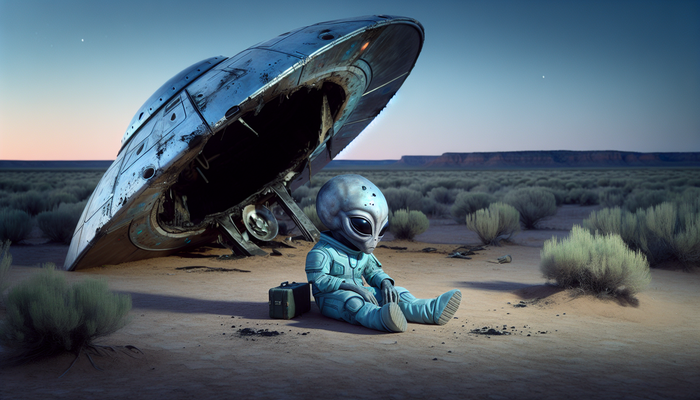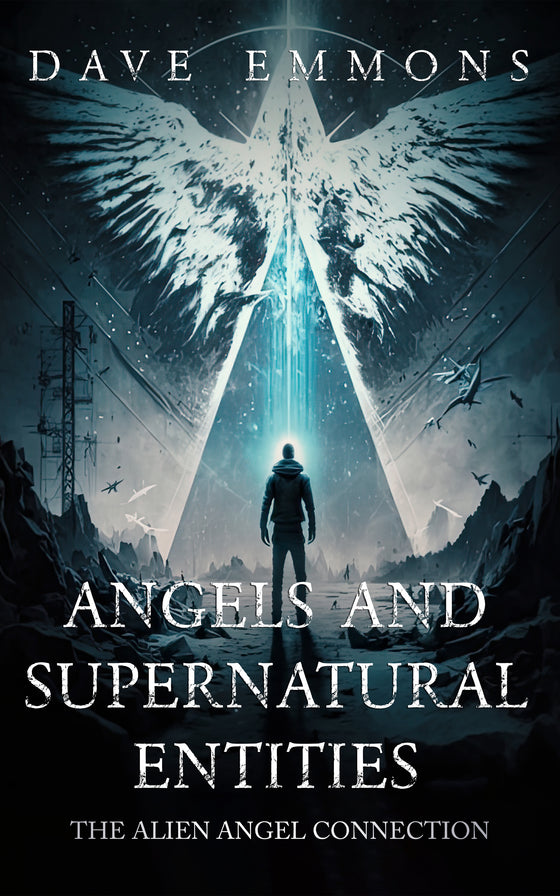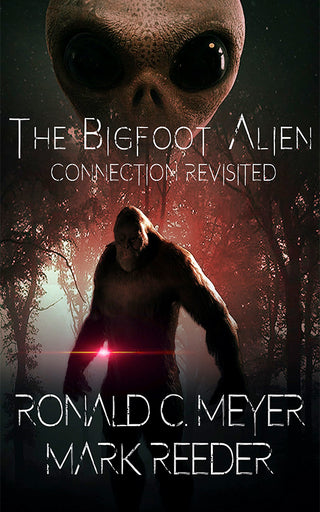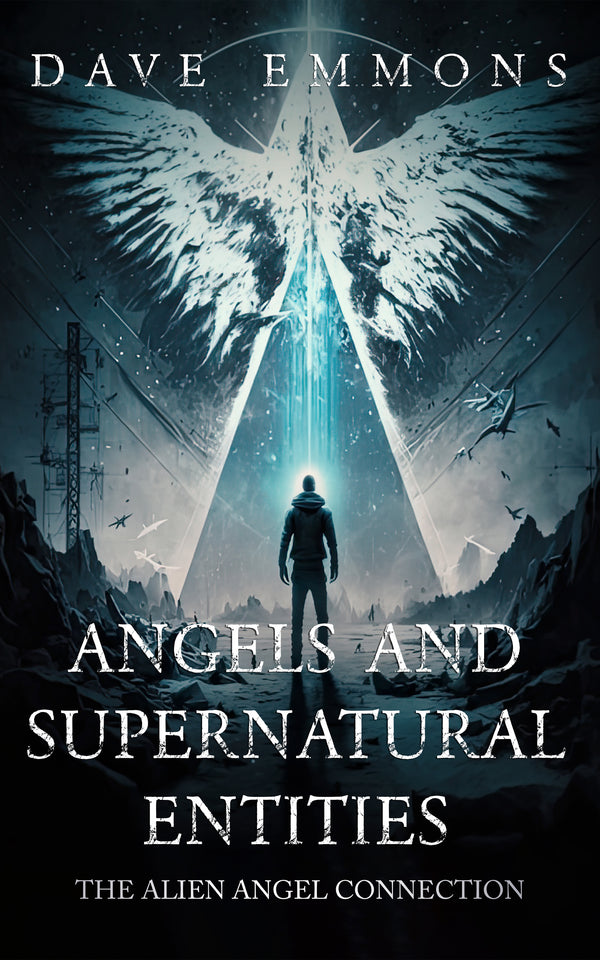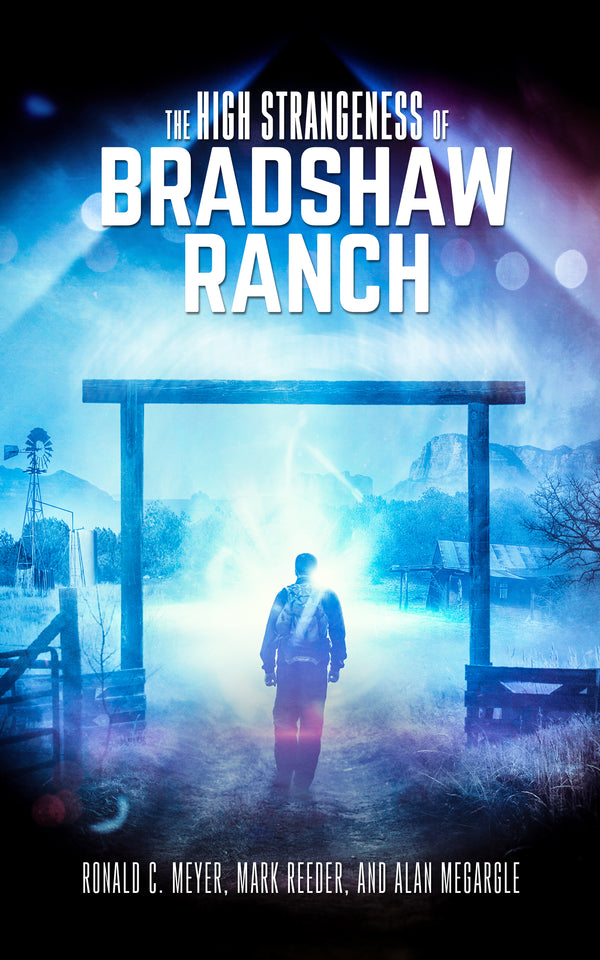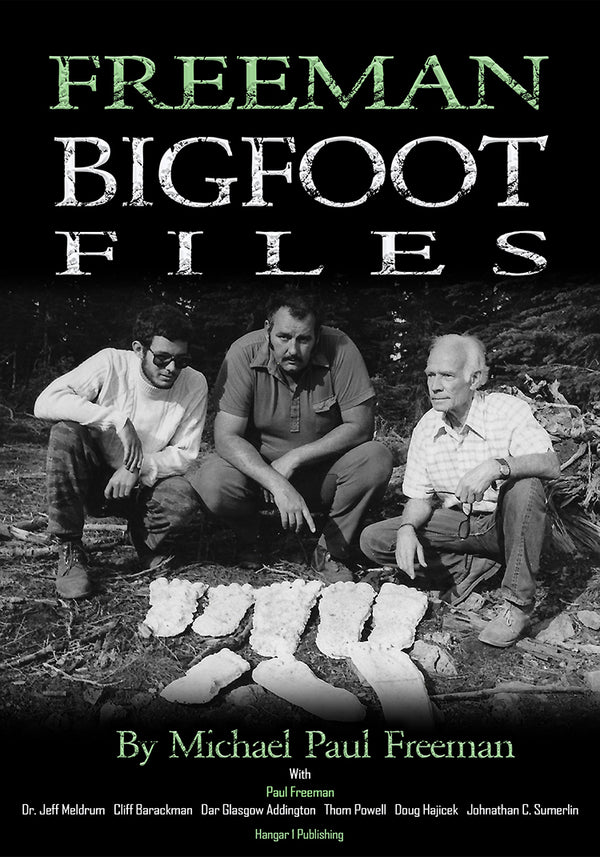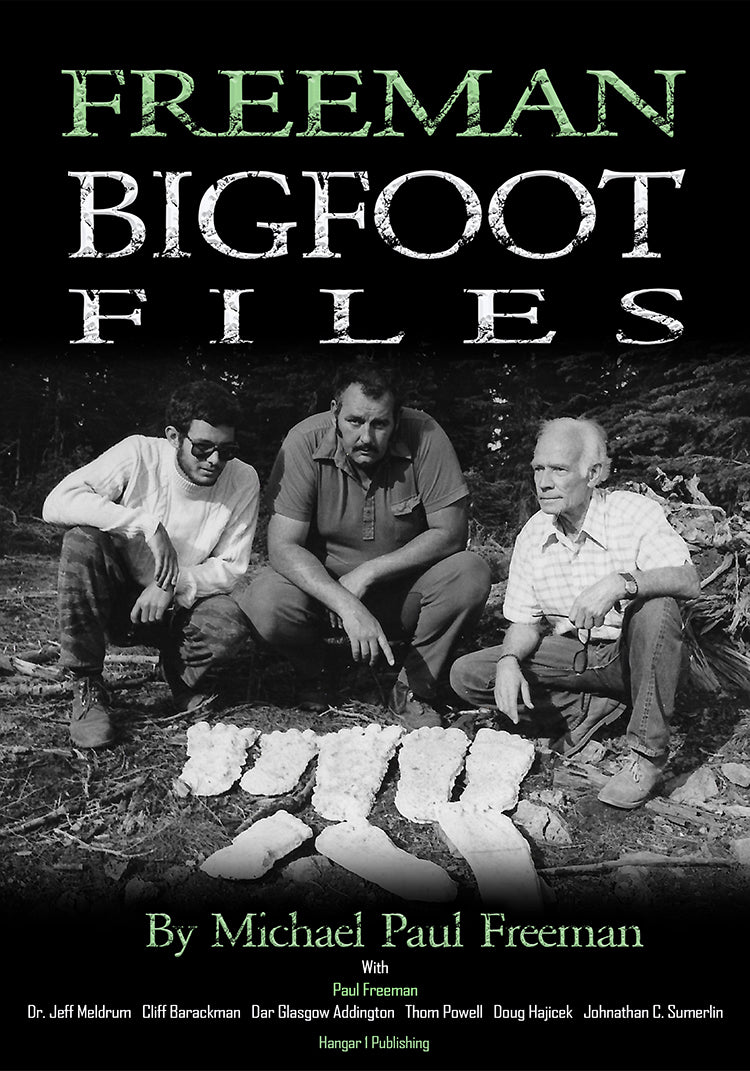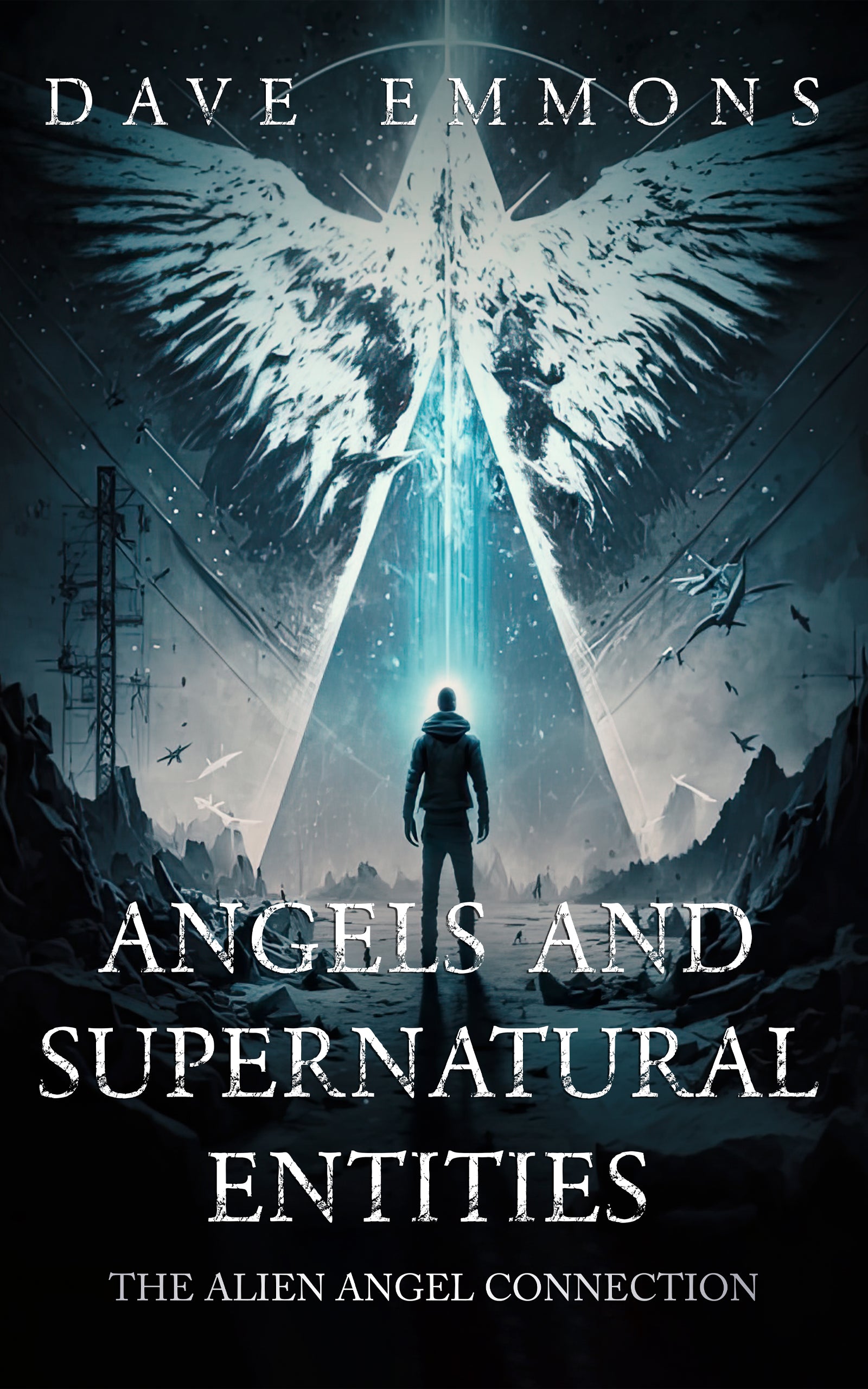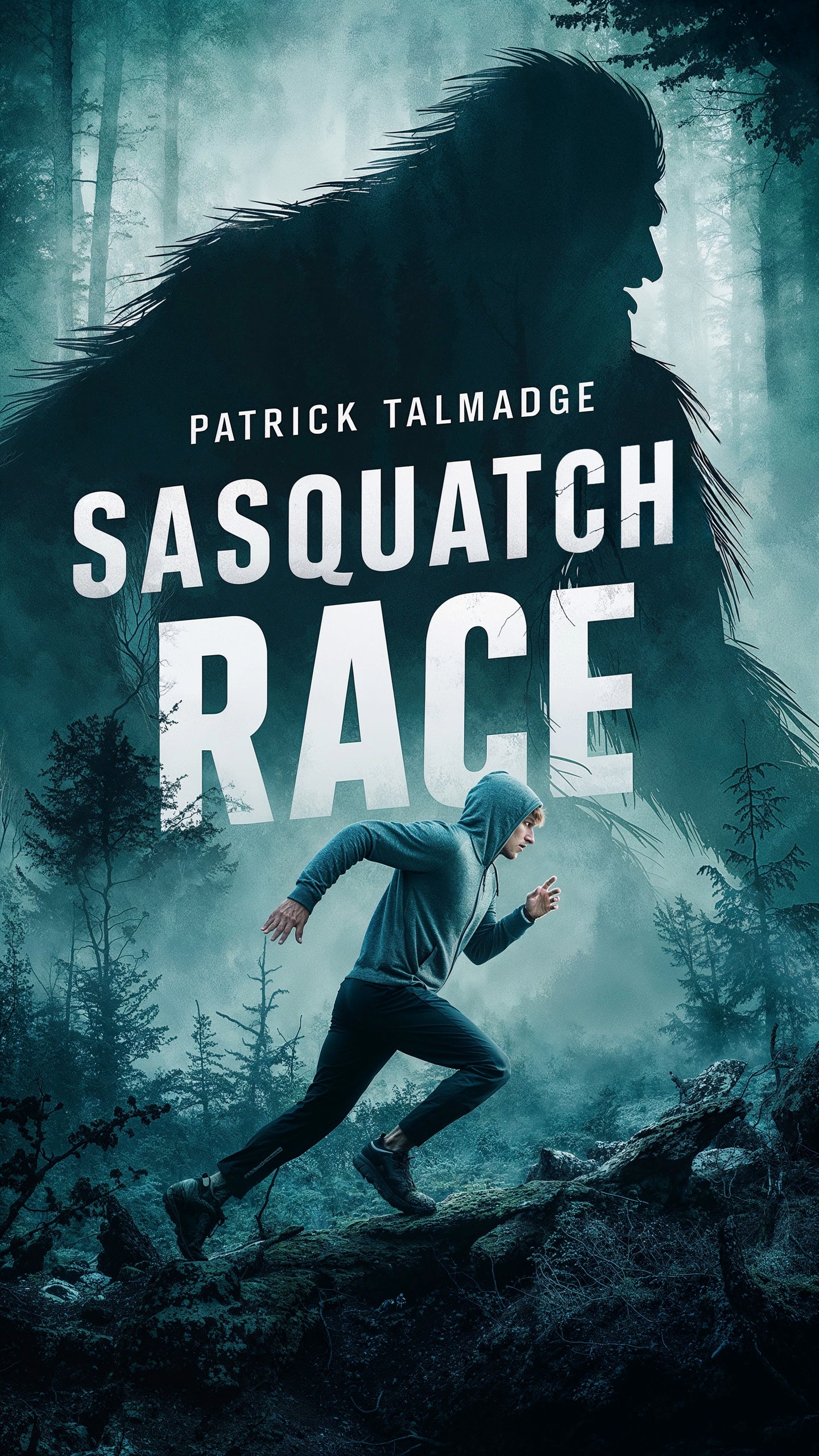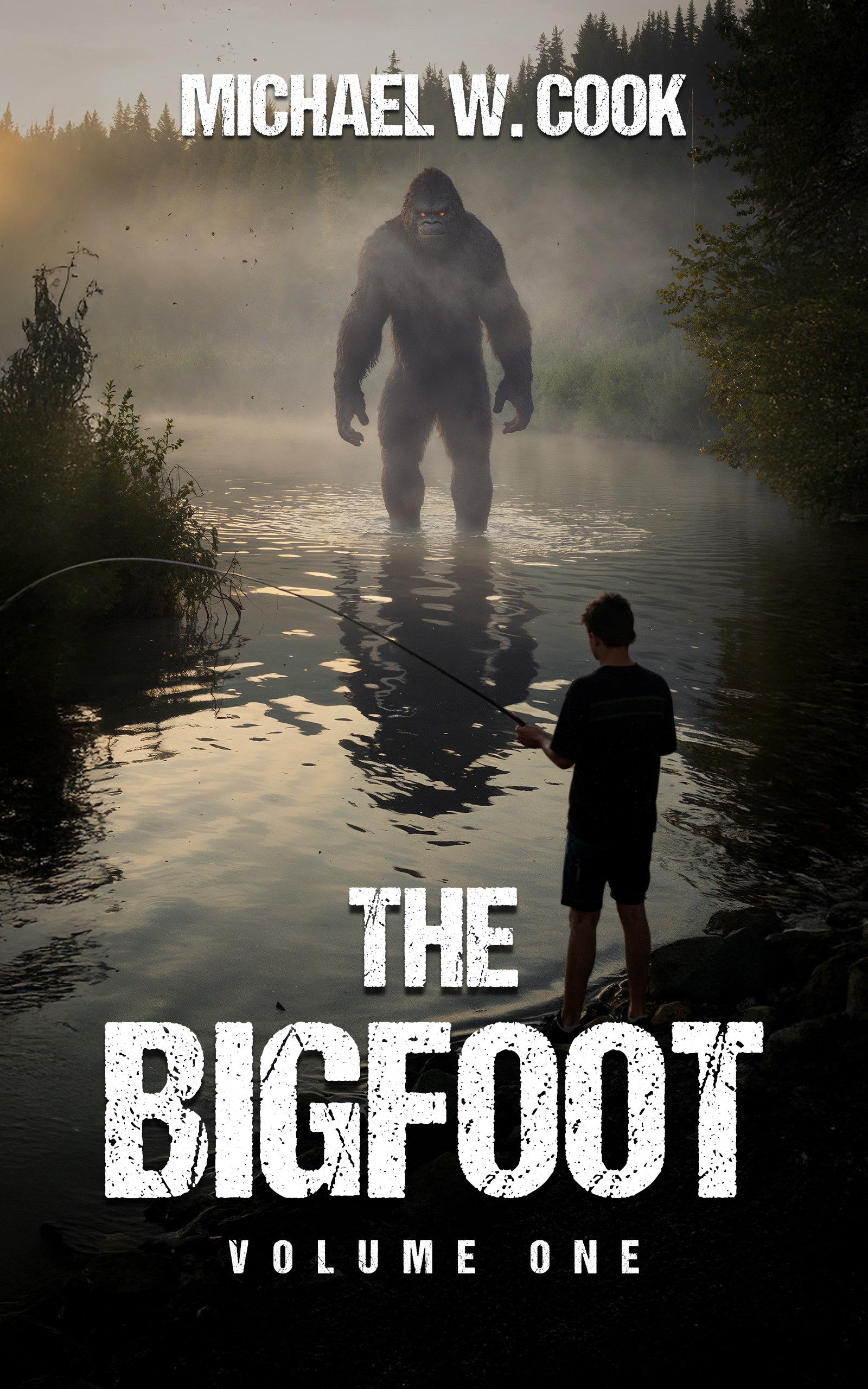The Allagash Abductions: Maine's Iconic Alien Encounter
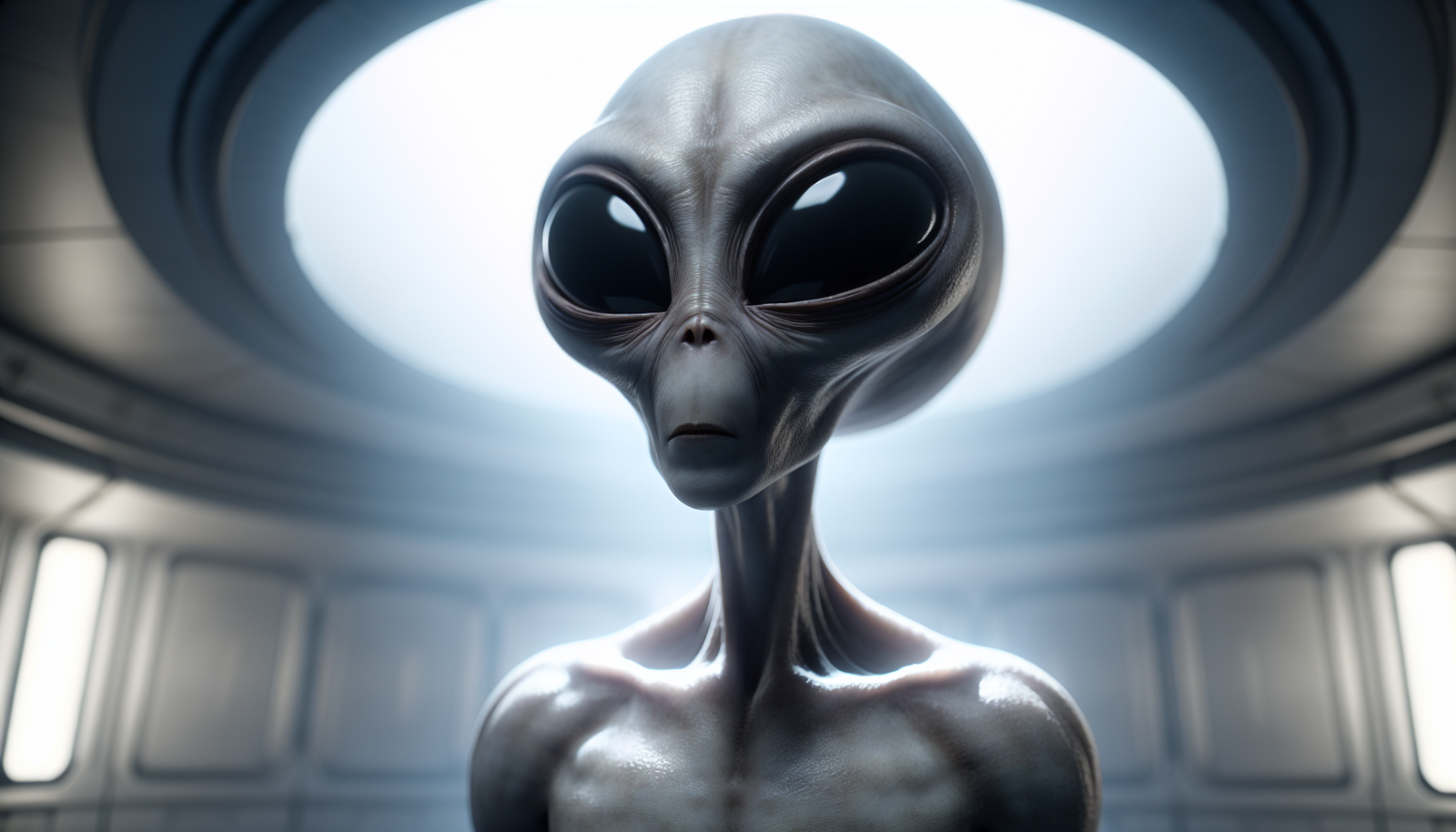
By Vanessa Torres, Ufologist
Introduction: Where Wilderness Meets the Unknown
Imagine yourself deep in the Maine wilderness, miles from anywhere. The air is crisp, the only sounds are the rustling leaves and the distant call of a loon across a mirror-still lake. It's the kind of place that promises peace, maybe a bit of adventure, a chance to disconnect. That’s exactly what four young friends sought in August 1976 when they pushed their canoes into the waters of the Allagash Wilderness Waterway. But what they found, they say, wasn't just serenity; it was an encounter so bizarre, so terrifying, it would follow them for the rest of their lives and become one of the most debated stories in the annals of UFO phenomena.
The Allagash Abductions isn't just another campfire tale. It’s a complex puzzle involving four credible witnesses – art students, no less – a remote location ideal for secrets, claims of strange lights, baffling missing hours, and horrifying memories unearthed years later through nightmares and the controversial process of hypnosis. What truly happened to twin brothers Jim and Jack Weiner, and their friends Charlie Foltz and Chuck Rak, during that fateful night on Eagle Lake? Was it a genuine brush with the extraterrestrial, a shared psychological breakdown, or something else entirely? We're going to explore every angle of this compelling case, piecing together the sightings, the alleged abduction, the evidence presented, the sharp points of skepticism, and the enduring mystery that keeps the Allagash story alive decades later. Buckle up, because this trip into the Maine woods takes a sharp turn into the unknown.
The Stage is Set: Northern Maine, 1976
To understand the Allagash incident, you have to picture the setting. The Allagash Wilderness Waterway in 1976 wasn't just remote; it was practically another world. We're talking thousands upon thousands of acres of dense northern Maine forest, a network of interconnected lakes (including the infamous Eagle Lake) and rivers, accessible primarily by canoe or float plane. The nearest towns were miles away, separated by vast stretches of uninhabited land. Nights here are a different kind of dark – an absolute, pitch-black void where the stars seem close enough to touch, and the silence is broken only by the sounds of the wild. It’s beautiful, yes, but also profoundly isolating. It’s the kind of place where if something strange did happen, who would ever know? This isolation is a key character in the Allagash story, providing a perfect, unwitnessed stage for the bizarre events the men claimed unfolded.
And who were the players on this stage? Four young men in their early twenties, fresh out of or still attending the Massachusetts College of Art and Design in Boston. There were the identical twins, Jack and Jim Weiner, their friend Charlie Foltz, and Chuck Rak, who served as their guide for the trip. They weren't seasoned woodsmen looking for trouble; they were artists seeking a two-week escape from city life. They planned to canoe, fish, camp, and soak in the raw beauty of the wilderness – perhaps hoping the tranquility would spark some creative inspiration. The dynamic seems typical of a group of friends on an adventure: camaraderie mixed with the challenges of navigating a demanding environment. Little did they know just how demanding this trip would become.
The First Glimpse: A Light in the August Sky
The first hint that this wouldn't be an ordinary camping trip came early on, just two nights in. The group had set up camp near Chamberlain Lake. As dusk settled, bathing the landscape in soft, fading light, Jim Weiner noticed something odd. High above the treetops, maybe a few miles off, hung a bright light. It wasn't just a star; it shone with what Jim later described as a "strange quality of light," a sort of unnatural brilliance.
He grabbed his binoculars, trying to make sense of it. Was it a helicopter? A weather balloon? It didn't seem to be moving in any particular direction, just hovering silently. Then, after maybe 15 or 30 seconds of observation, the light did something truly weird. It didn't just switch off; it "winked out," vanishing from the outside edges inward, like a giant mechanical eye closing. Poof. Gone. The men saw it, acknowledged its strangeness, perhaps felt a flicker of unease, but ultimately dismissed it. In the vastness of the Allagash, maybe strange lights just happened. They had a trip to continue, tents to pitch, fish to catch. They didn’t dwell on it, but the seed of the unusual had been planted.
The Fateful Night on Eagle Lake: The Second Sighting and Escalation
Two nights later, August 20th, 1976. The location: Smith Brook campsite on the shore of Eagle Lake. Daytime fishing hadn't yielded much, so the four friends decided to try their luck under the cloak of darkness. Knowing how utterly black the wilderness night could be, they took a precaution: they built a massive bonfire near their camp. This wasn't just for warmth; it was intended as a beacon, a blazing landmark they could easily spot from the canoe to guide them back safely. Accounts differ slightly on the exact size, but all agree it was substantial – Chuck Rak estimated flames reaching ten feet high, designed, according to Jim Weiner, to burn for several hours.
They paddled out onto the calm, dark waters of Eagle Lake. After about twenty minutes or so, guide Chuck Rak suddenly got that primal, hair-raising feeling – the sensation of being watched. He scanned the dark shoreline, then looked over his shoulder. There it was again. The light. But this time, it was different. It was much closer, hovering silently just above the treeline across the cove, maybe a few hundred yards away. It was huge, described as a large, round globe, possibly 80 feet in diameter, pulsating with intense colors – red, green, yellow, white – blending and shifting in a "liquid kind of melding motion," as Rak later put it. It was incredibly bright, like a "miniature sun," yet utterly silent.
Staring at this impossible object, confounded and maybe a little awestruck, Charlie Foltz did something impulsive. He grabbed his flashlight and flashed an SOS signal towards the hovering light. The reaction was immediate and terrifying. The object didn't just acknowledge the signal; it responded aggressively. A powerful, cone-shaped beam of bluish-white light shot out from its underside, sweeping across the water like a searchlight before fixing directly on their 16-foot canoe.
In that instant, the mood shattered. For Jack, Jim, and Charlie, curiosity turned to primal fear. They started paddling frantically, using hands and oars, desperate to reach the safety of the shore. But Chuck Rak? His reaction was starkly different. He seemed frozen, mesmerized, his paddle resting across his lap. By his own account, he felt "elation," a sense of awe, even questioning why the others were fleeing when they had seemingly initiated contact. The beam intensified, the silent, glowing sphere moved relentlessly closer, engulfing the small canoe and its occupants in its overwhelming light.
The Interruption: Missing Time and a Dying Fire
One moment, the four men are in their canoe, bathed in an impossibly bright, silent beam of light descending upon them from the sky. The next coherent memory any of them possess is finding themselves back on the shore of Eagle Lake, near their campsite. They were standing, disoriented, perhaps staring numbly up at the light source, which now hovered incredibly close – just a few dozen feet away. Jim Weiner recalled thinking he could literally throw a rock and hit it.
After hanging there for several moments, as if observing them, the craft performed its strange vanishing act again. It seemed to implode, shrink, then reappear moments later over the trees on the far side of the lake before accelerating straight up into the night sky, fading rapidly until it was indistinguishable from the distant stars.
Then came the chilling realization. The men collectively felt they had only been out on the water for a short period – estimates ranged from 15 to 20 minutes, maybe half an hour at most. But the monumental bonfire they had built, the beacon designed to burn brightly for hours? It was now nothing more than a bed of smoldering embers. The physical evidence screamed that a significant chunk of time, possibly two hours or more, had vanished without a trace from their conscious experience. This discrepancy between their subjective sense of time and the state of the fire is perhaps the most compelling objective clue in the entire Allagash saga – a tangible marker of inexplicably lost time.
Yet, in the immediate aftermath, their reaction was oddly subdued. Instead of panicked discussion or frantic attempts to understand what had just happened and where the time had gone, they all felt an overwhelming sense of exhaustion, a deep fatigue. They secured their gear, exchanged few words, and simply went to their tents to sleep. As Jack Weiner later reflected, it was highly unusual that four young guys wouldn't stay up analyzing such a bizarre event. It was almost as if they were programmed not to think about it too deeply, to just move on.
Seeds of Memory: Delayed Nightmares and Unsettling Visions
The Allagash wilderness trip ended, and the four friends returned to their lives in Massachusetts. They mentioned the strange light sighting to some friends and family, but the story was largely met with disbelief or dismissal. Even the men themselves found the experience hard to process, the memories clouding over time. Life went on. Until 1988 – twelve years after that night on Eagle Lake.
That's when Jim Weiner began experiencing nightmares. These weren't ordinary bad dreams; they were intensely vivid, recurring, and deeply disturbing. He’d find himself in a starkly lit, sterile room. He saw himself and his three friends – Jack, Chuck, and Charlie – sitting naked on a bench. He felt an overwhelming sense of fear and vulnerability. In these nightmares, strange, non-human figures were examining him, focusing on his arm, while his friends watched, seemingly paralyzed and unable to intervene. The feelings lingered long after waking, haunting his thoughts.
Around the same time, completely independently, Jim's identical twin brother, Jack, started having almost identical nightmares. He, too, saw the brightly lit room, the naked friends on the bench. He felt intense danger. Jack’s dream-memories included startlingly specific details about the beings: they had long necks, large heads dominated by huge, metallic, glowing eyes without lids, and unsettling insect-like hands with four fingers. A dark, shadowy figure would sometimes emerge from the intense light. He’d wake up sweating, heart pounding, terrified.
The fact that both twins were experiencing such similar, specific, and traumatic nightmares, seemingly rooted in the 1976 camping trip, was staggering. It suggested that their fragmented memories of Eagle Lake were hiding something far more complex and terrifying. This wasn't just a UFO sighting anymore; the persistent nightmares hinted at a repressed memory, a shared trauma that was beginning to violently surface after more than a decade of dormancy. The similarity between the twins' independent experiences became the catalyst for seeking answers, propelling the Allagash story into its next, most controversial chapter. Some have pointed to a serious fall and head injury Jim suffered in 1978, which resulted in epilepsy, as a potential trigger for his nightmares, raising questions about whether trauma or neurological changes played a role. However, this doesn't easily explain Jack's concurrent, identical nightmares.
Unlocking the Vault: Hypnosis and Recalled Trauma
Driven by the unsettling convergence of their nightmares, Jim Weiner decided he needed help understanding what might have truly occurred back in 1976. He reached out to Raymond Fowler, a prominent and respected UFO researcher based in Massachusetts with extensive experience investigating sightings and alleged encounters. Fowler listened intently to Jim's account – the Eagle Lake sighting, the missing time, the shared nightmares. He was immediately struck by the case, particularly the multiple-witness aspect and the involvement of identical twins. Believing the nightmares were likely bleed-through memories of a repressed event, Fowler suggested a course of action that would forever define the Allagash case: hypnotic regression therapy.
All four men – Jim, Jack, Charlie, and Chuck – agreed to participate. The sessions were conducted individually by Anthony Constantino, a hypnotherapist experienced in such cases. Crucially, the men agreed not to discuss the content of their hypnosis sessions with each other until everyone had completed theirs, aiming to preserve the independence of their recalled accounts.
What emerged under hypnosis was astonishing – and horrifyingly consistent. Each man, independently, recounted a narrative of abduction. They described being drawn up from their canoe into the hovering craft via the powerful beam of light. Inside, they found themselves in a stark, cold, brightly lit environment. Charlie Foltz famously likened the examination room to a "veterinarian's office," complete with a metallic or silvery examination table.
All four recalled being forced to strip naked and finding themselves in a strange, zombie-like state, feeling paralyzed or unable to resist commands that seemed to come telepathically. They described undergoing intrusive and often painful physical examinations. The beings took samples – skin scraping from chests, arms, and legs; fluid samples, including blood, urine, and even semen. The procedures seemed focused on biology, particularly reproductive systems, and perhaps neurological assessment or brain scanning. Chuck Rak described seeing a silvery, curved device being used on Charlie, appearing to cause him pain as it "sucked something."
Their descriptions of the entities performing these procedures were remarkably similar: small, slender beings, often gray-skinned, with large, hairless heads dominated by huge, dark, almond-shaped or metallic eyes. They noted long, thin necks and limbs, and hands with only four long, insect-like or spider-like fingers, lacking an opposable thumb. While the descriptions fit the burgeoning archetype of the "Greys," Chuck Rak added a peculiar detail – he mentioned having difficulty focusing visually on the beings, comparing the experience to "trying to tune in a fuzzy radio station," hinting perhaps at a perceptual distortion or even a cloaking effect. Telepathic messages like "Don't be afraid" and "Just do what we say" were also commonly recalled.
When Fowler finally brought the four men together after all sessions were complete, they were stunned. As they shared their hypnotic recollections, they discovered their accounts matched in intricate detail. They found themselves finishing each other's sentences, confirming shared moments within the terrifying ordeal. This independent corroboration under hypnosis became the bedrock evidence cited by proponents arguing for the reality of the Allagash Abductions.
The Visual Testimony: Art as Evidence
One of the most unique and compelling aspects of the Allagash case stems directly from the participants' backgrounds. Remember, these weren't just four random guys; they were all students at the Massachusetts College of Art and Design. This shared artistic training provided them with a powerful tool to communicate their experiences after the hypnotic regression sessions: they could draw.
Following the hypnosis, each man independently created sketches and drawings depicting what they recalled seeing aboard the craft. These weren't crude doodles; they were detailed renderings born from trained observation and artistic skill. They drew the entities, capturing their distinct physiology – the large heads, the massive dark or metallic eyes, the slender bodies, the four-fingered hands. They depicted the interior of the craft, the examination room, the silvery table, and even some of the strange instruments used during the procedures.
What makes this visual testimony so significant is the remarkable consistency across the independently produced artwork. While individual styles varied, the core elements depicted – the appearance of the beings, the layout of the examination area, the nature of the devices – showed striking similarities. These drawings offered a tangible translation of their recalled memories, a visual corroboration that went beyond verbal accounts. Critics might argue that shared cultural imagery of aliens could influence drawings, but proponents see the consistency and specific details in the artwork, created independently by four trained artists immediately after recalling the trauma under hypnosis, as powerful supporting evidence that they were depicting a shared, real experience. Details like the elliptical eyes, almost beak-like mouths, "turkey-wattle" necks, and thumbless hands, captured in pencil and ink, gave a chilling face to their recollections.
Establishing Credibility: Psychological Evaluation and Polygraph Tests
Beyond the consistency of the narratives recovered through hypnosis and the corroborating artwork, steps were taken to bolster the credibility of the four witnesses themselves. Concerns about shared delusion, mental instability, or outright fabrication naturally arise when dealing with claims as extraordinary as alien abduction. To address these, the Allagash four underwent further scrutiny.
Firstly, psychiatric evaluations were conducted. Independent mental health professionals assessed each man and concluded that they were all mentally stable. There were no signs of psychosis, schizophrenia, or other conditions that might readily explain their shared, bizarre experiences as hallucinations or delusions. This finding was crucial in countering arguments that the men were simply mentally unwell.
Secondly, each of the four men submitted to polygraph examinations, or lie detector tests, regarding their accounts of the Eagle Lake incident and the subsequent abduction memories recovered via hypnosis. All four men reportedly passed these tests. Now, it's important to be clear about what polygraphs can and cannot do. They are not infallible "truth machines," and their results are generally not admissible as definitive proof in court. They measure physiological responses like heart rate, blood pressure, and respiration, based on the theory that deception causes stress which alters these responses. Passing a polygraph doesn't necessarily mean an event happened exactly as described, but it strongly suggests that the person believes they are telling the truth. In the context of the Allagash case, the fact that all four men passed indicated that, as far as the tests could determine, they genuinely believed in the reality of their terrifying memories. This added another layer of intrigue and made dismissing their story as a simple hoax more difficult.
The Public Eye: Media Frenzy and Lasting Fame
Once the hypnosis sessions brought forth the detailed abduction accounts, and with the backing of UFO researcher Raymond Fowler, the Allagash story exploded into the public consciousness. It transitioned from a forgotten strange sighting into a full-blown, high-profile alien abduction case. The media, particularly outlets focused on the paranormal and unsolved mysteries, latched onto the story.
The case received prominent coverage on the immensely popular television show "Unsolved Mysteries," complete with dramatic reenactments and interviews with the men, bringing their chilling tale into millions of homes. It was also featured on other specials like "Abducted by UFOs." This television exposure was instrumental in cementing the Allagash Abductions in the public imagination.
Raymond Fowler compiled his extensive research, including hypnosis transcripts and the men's drawings, into his 1993 book, "The Allagash Abductions: Undeniable Evidence of Alien Intervention." The title itself reflects Fowler's conviction, and the book became a key text for those interested in the case and the abduction phenomenon in general.
The four friends became reluctant celebrities, known collectively as the "Allagash Four." They were invited to speak at UFO conferences, sharing their experiences with audiences eager for firsthand accounts of extraterrestrial encounters. They even made appearances on national television talk shows, famously including "The Joan Rivers Show," where they faced questions about their ordeal before a mainstream audience. Their story was even adapted into a comic book format. However, this fame was a double-edged sword. While it brought validation from believers and researchers within the UFO community, it also exposed them to widespread public ridicule, skepticism, and accusations of fabrication, forever linking their names to one of America's most bizarre and controversial tales.
Points of Contention: Scrutiny and Skepticism
As the Allagash story gained notoriety, it inevitably attracted intense scrutiny and skepticism. While believers pointed to the consistency and polygraph results, critics highlighted several significant points of contention, questioning the validity of the abduction claims.
The most prominent criticism centers on the use of hypnotic regression. Skeptics argue forcefully that hypnosis is not a reliable tool for retrieving accurate memories, especially those related to traumatic or unusual events. Instead, they contend, hypnosis can easily create false memories through suggestion (intentional or unintentional) from the therapist, or through a process called confabulation, where the subject fills in memory gaps with plausible, sometimes elaborate, but ultimately fabricated details. Critics like clinical psychologist Dr. William Cole suggested that the men's detailed accounts under hypnosis could be constructs rather than genuine recollections.
Tied to this is the argument of popular culture influence. By 1988, when the hypnosis occurred, the idea of alien abduction, particularly involving "Grey" aliens and medical exams, was already circulating in books, movies (like 1953's "Invaders from Mars" or later films), and television. Skeptics propose that the men's "recovered" memories might have been unconsciously shaped by these existing narratives, leading them to recall experiences that aligned with established alien abduction tropes.
The crucial "missing time" evidence provided by the campfire also came under fire. As mentioned, Chuck Rak later disputed the size of the logs used, claiming they were small and would have burned out quickly, undermining the idea of a discrepancy requiring hours of missing time. Charlie Foltz maintained the logs were large. This conflicting testimony regarding a key piece of physical evidence allows skeptics to question the reliability of the men's initial observations and the entire premise of missing time.
The 12-year delay between the Eagle Lake incident and the emergence of abduction memories via nightmares and hypnosis is another red flag for skeptics. Why did these traumatic memories remain dormant for so long? Jim Weiner's head injury and subsequent epilepsy offer a potential alternative explanation for the onset of his nightmares, suggesting a neurological rather than purely psychological trigger related to a repressed event.
Furthermore, there's the persistent lack of unambiguous physical evidence. While Jack Weiner reported later physical marks and a confiscated tissue sample, these claims remain largely anecdotal and difficult to verify independently. There was no confirmed evidence left at the campsite – no scorched earth, unusual radiation readings, or physical traces of a craft or non-human beings. For many skeptics, the absence of hard, testable evidence is a major obstacle to accepting the extraordinary claims.
Finally, while psychiatric evaluations deemed the men stable, skeptics don't entirely rule out the possibility of a shared psychological phenomenon or even a deliberate, well-rehearsed hoax, though the latter seems less likely given the polygraph results suggesting genuine belief. The core skepticism often returns to the unreliable nature of the memories themselves, especially those recovered through hypnosis years after the alleged event.
The Turning Point: Chuck Rak's Recantation
For decades, the Allagash Four presented a united front, their shared story a cornerstone of multiple-witness abduction claims. Then, in 2016 – a full forty years after the incident and nearly thirty years after the hypnosis sessions – Chuck Rak dropped a bombshell. In interviews, he publicly declared that the abduction part of the story was essentially fabricated.
Rak didn't deny everything. He maintained that they did see a strange, unidentified flying object on Eagle Lake and two nights prior. "Oh yes, I saw the craft," he affirmed, describing the intensely bright, color-shifting globe. He even recalled reporting it to a park ranger who dismissed it as searchlights from a hardware store opening 75 miles away – an explanation Rak found laughable.
However, Rak claimed that the detailed accounts of being taken aboard a ship and examined by aliens, primarily recalled under hypnosis by the other three, did not happen. He suggested the narrative was "brilliant storytelling" rather than truth. His stated motivation? Money. "The reason I supported the story at first was because I wanted to make money," he admitted, stating they had speculated about making millions, though they ultimately "made very little." He also alleged that the group had been smoking hashish ("Afghan temple ball") on the night of the main sighting, contradicting the others' claims of sobriety beyond a couple of beers during the entire trip.
Rak's recantation sent shockwaves through the community interested in the case. It provided powerful ammunition for skeptics and cast a long shadow of doubt over the entire narrative. Why would one of the four central witnesses suddenly reverse course after decades?
The remaining three – Jim, Jack, and Charlie – vehemently disputed Rak's claims. They asserted that Rak was lying, portraying him as an angry, resentful individual lashing out after a falling out with the group. Charlie Foltz described Rak as having a "violent temper," a "loose cannon," and a "mental disaster area," even claiming Rak had been banned from some UFO conventions. Jim Weiner suggested Rak was bitter about his former friends turning their backs on him.
They further alleged that it was actually Rak who had initially proposed concocting controversy or manipulating the story to "make a million dollars," a proposal they claim they rejected due to ethical concerns. Raymond Fowler supported their view, noting that Rak had struggled during hypnosis, lacking the detailed recall the others experienced, and suggesting Rak, needing to be "in control," was unhappy with this outcome. Rak himself didn't dispute the falling out, stating that being "kicked out of the group" freed him to "tell the truth." This dramatic turn adds an undeniable layer of human conflict and potential unreliability to an already complex and bizarre story.
Enduring Belief and Lingering Effects
Despite the controversy ignited by Chuck Rak's 2016 recantation, the other three members of the original Allagash group – Jim Weiner, Jack Weiner, and Charlie Foltz – have never wavered. They continue to stand firmly by their account of being abducted and examined by extraterrestrial beings on that August night in 1976. They maintain that their story is true, often countering accusations of fabrication by stating they had little to gain financially and much to lose in terms of public ridicule and personal peace. "If you believe it, that’s all right. If you don’t believe it, I don’t care. I don’t care, ’cause it did," Charlie Foltz stated emphatically in one interview.
For these three men, the experience wasn't just a story; it was a life-altering event with tangible, lingering effects. The recurring nightmares and persistent anxiety are testaments to the deep psychological impact, regardless of whether one attributes it to an alien encounter or another form of trauma. The emotional toll of recounting the humiliating details of the alleged examination, compounded by public skepticism, has clearly been significant.
Beyond the psychological, there are the persistent, though less verifiable, claims of physical aftereffects, particularly concerning Jack Weiner. He reported experiencing subsequent abduction encounters after 1976. Following one such alleged event, he claimed to have developed a mysterious lump on his leg. According to the account relayed by researchers, the lump was surgically removed, sent to the Centers for Disease Control (CDC) for analysis, but was then purportedly confiscated by the Department of Defense, with the results subsequently "lost." Jack also reported unexplained "biopsy-like scoop marks" appearing on his leg and burns on the bottom of his feet related to other alleged encounters. While compelling, these claims lack independent medical verification and documentation, placing them firmly in the realm of anecdotal evidence, yet adding another layer of intrigue for believers. The story certainly resonates within a region some consider a relative hotspot for UFO sightings, embedding the Allagash case within a broader context of unexplained phenomena reported in Maine.
The Allagash Legacy: An Unresolved Mystery
So, where does that leave us with the Allagash Abductions? It remains one of the most compelling, complex, and controversial cases in the history of ufology. Its fame rests on the powerful combination of factors: four seemingly credible witnesses, initially consistent accounts recovered independently through hypnotic regression, detailed artistic renderings, passed polygraph tests, and the tangible mystery of the missing time suggested by the campsite fire. For decades, it stood as a benchmark example of a multiple-participant abduction event.
Yet, the story is undeniably complicated. The inherent questions surrounding the reliability of hypnosis for factual recall loom large. The potential influence of cultural narratives about aliens cannot be dismissed. The conflicting accounts regarding the campfire logs inject uncertainty into the physical evidence. And most significantly, the dramatic recantation by Chuck Rak, one of the original four, fundamentally challenges the narrative's integrity, introducing plausible alternative motivations like financial gain and personal resentment.
The Allagash Abductions thus becomes a fascinating case study, not just in the possibility of alien encounters, but in the very nature of memory, trauma, belief, and storytelling. Was it truly "undeniable evidence of alien intervention," as Raymond Fowler's book title proclaims? Or is it a powerful testament to how shared experience, psychological stress, controversial therapeutic techniques, and perhaps even deliberate embellishment can construct an extraordinary narrative?
The case remains stubbornly unresolved. No definitive proof has emerged to silence the skeptics, nor has any explanation fully debunked the sincere conviction of the three men who maintain their story. The Allagash Abductions continues to fascinate because it pushes against the boundaries of our accepted reality. It forces us to consider possibilities – both extraterrestrial and psychological – that are deeply unsettling. It’s a story woven into the fabric of American paranormal lore, a campfire tale writ large under the vast, dark skies of the Maine wilderness, forever prompting us to look up and wonder what mysteries might lie hidden, just beyond the treeline, just beyond our understanding.
From Bigfoot to UFOs: Hangar 1 Publishing Has You Covered!
Explore Untold Stories: Venture into the world of UFOs, cryptids, Bigfoot, and beyond. Every story is a journey into the extraordinary.
Immersive Book Technology: Experience real videos, sights, and sounds within our books. Its not just reading; its an adventure.


